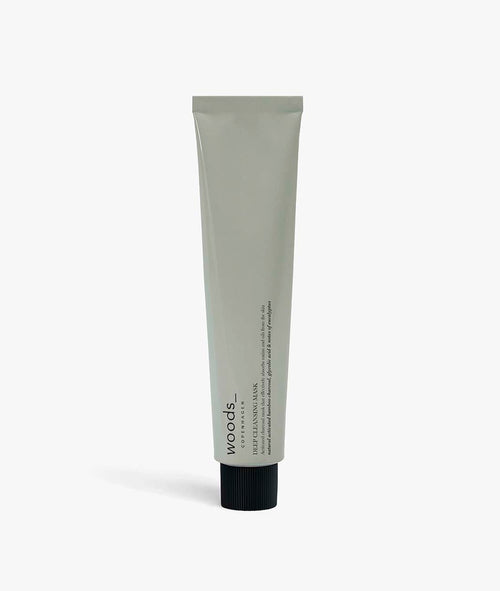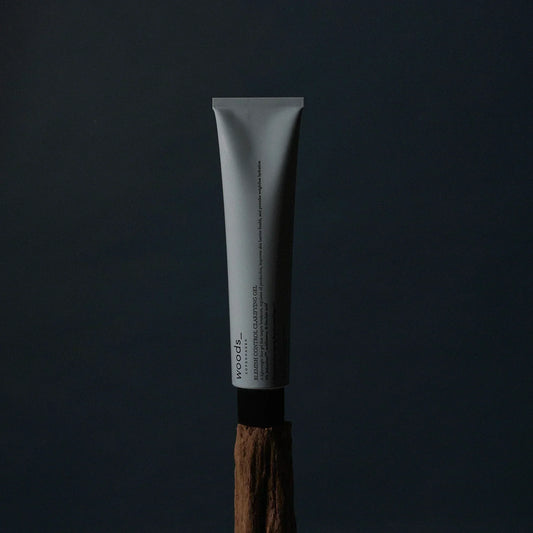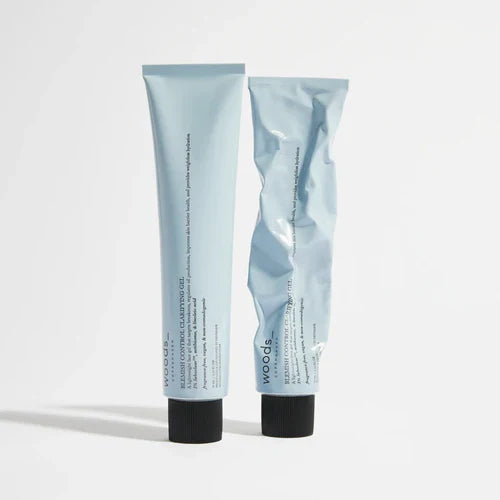Activated charcoal
Activated charcoal is a skincare ingredient known for its ability to draw out impurities, toxins, and excess oil from the skin, making it particularly effective in deep-cleansing masks and cleansers. Its structure allows it to absorb dirt and pollutants, leaving the skin feeling clean and refreshed.
Active ingredients
Active ingredients refer to the compounds or substances that directly address specific skin concerns or provide tangible benefits. These ingredients are often formulated at concentrations proven effective in scientific studies and play a key role in delivering desired results such as providing hydration or addressing impurities or premature signs of aging.
Amino acids
Amino acids are the building blocks of proteins, essential for various bodily functions including tissue repair and enzyme production. In skincare, they can support the skin’s natural processes, aiding in moisture retention, collagen synthesis, and overall skin health, contributing to a more radiant complexion.
Antioxidants
Antioxidants are molecules that help neutralize harmful free radicals in the body, preventing oxidative damage to cells and tissues. In skincare, antioxidants like vitamin C, vitamin E, and green tea extract can protect the skin from environmental stressors such as UV radiation and pollution, helping to maintain a youthful appearance and prevent early signs of aging. Read more in our blogpost The power of antioxidants in skincare: The secrets to radiant skin.
Ceramides
Ceramides are lipid molecules naturally found in the skin’s outermost layer, crucial for maintaining its barrier function and preventing moisture loss. In skincare, ceramides are often used to replenish and strengthen the skin barrier, helping to improve hydration, protect against environmental stressors, and reduce the risk of irritation and sensitivity.
Collagen
Collagen is a protein found abundantly in the body, particularly in the skin, bones, and connective tissues. It provides structural support and elasticity, helping to maintain skin firmness and smoothness. In skincare, collagen is often used in formulations to minimize the appearance of wrinkles and promote a more youthful complexion, although its effectiveness in topical applications is debated. Read more in our blogpost The importance of collagen.
Elastin
Elastin is a protein in the body’s connective tissues responsible for maintaining skin elasticity and resilience. Alongside collagen, elastin contributes to the skin’s ability to stretch and bounce back, providing a youthful appearance. However, unlike collagen, the body’s ability to produce elastin decreases with time, leading to loss of elasticity over time.
Free radicals
Free radicals are unstable molecules with unpaired electrons, which can cause damage to cells and DNA through oxidative stress. They are often generated as byproducts of normal metabolic processes or through exposure to environmental factors such as pollution, UV radiation, and smoking. In terms of the skin, free radicals are associated with premature aging, inflammation, and skin damage, making antioxidants crucial for neutralizing their harmful effects.
Humectants
Humectants are skincare ingredients that attract and retain moisture from the environment or underlying layers of the skin, helping to hydrate and plump the skin. Common humectants include glycerin, hyaluronic acid, and propylene glycol, which work by drawing water molecules into the skin and preventing moisture loss, promoting a smoother and more supple complexion. Read more in our blogpost Hydration 101: Moisturizers versus emollients.
Hyperpigmentation
Hyperpigmentation refers to the darkening of certain areas of the skin, caused by an overproduction of melanin. It can be triggered by factors such as sun exposure, hormonal changes, inflammation, or skin injuries. Common types include sun spots, melasma, and post-inflammatory hyperpigmentation, and treatments often involve topical agents like retinoids or chemical peels to lighten or even out skin tone. Learn more in our blogpost Hyperpigmentation: From cause to treatment.
Keratolytic agents
Keratolytic agents are compounds that help exfoliate and remove dead skin cells from the surface of the skin. They work by breaking down the bonds between cells, promoting cell turnover and revealing smoother, healthier skin underneath. Common keratolytics include alpha hydroxy acids (AHAs) like glycolic acid and beta hydroxy acids (BHAs) such as salicylic acid, which are used to treat acne, improve texture, and enhance the efficacy of other skincare products. Read more in our blogpost Which Skin Perfector should you choose?
Microbiome
The microbiome refers to the diverse community of microorganisms, including bacteria, fungi, and viruses, that inhabit various parts of the body, including the skin. In skincare, maintaining a balanced and healthy microbiome is crucial for optimal skin function, as it plays a role in protecting against pathogens, regulating inflammation, and supporting overall skin health. Disruptions to the skin microbiome can lead to conditions such as acne, eczema, and dermatitis. Learn more in our blogpost The skin microbiome: Where good skin begins.
Non-comedogenic ingredients
Non-comedogenic ingredients are substances that are less likely to clog pores and cause acne breakouts. These ingredients are often lightweight and non-greasy, making them suitable for oily or acne-prone skin. They typically allow the skin to breathe and function properly without contributing to the formation of blackheads or whiteheads.
Occlusives
Occlusives are skincare ingredients that create a barrier on the skin's surface to prevent moisture loss by locking in hydration. An example of an occlusive ingredient includes shea butter. An ingredient that is especially beneficial for dry or damaged skin, helping to restore and maintain its natural moisture balance. Read more in our blogpost Hydration 101: Moisturizers versus emollients.
Papules
Papules are small, raised bumps on the skin that are typically red or pink in color. They form when hair follicles become inflamed due to excess oil, bacteria, or other irritants, leading to swelling and the appearance of a solid, rounded lesion. Papules are common in conditions such as acne and can vary in size and severity. Read more in our blogpost Skin impurities: From cause to treatment.
Peeling
Peeling in skincare refers to the shedding or sloughing off of dead skin cells from the surface of the skin. This process can occur naturally as part of the skin's renewal cycle or be induced through exfoliation treatments like chemical peels or physical exfoliants. Peeling helps to reveal fresher, smoother skin underneath, improving texture and promoting a more radiant complexion. Learn more in our blogpost Why peeling is the secret to perfect skin.
Peptides
Peptides are short chains of amino acids, the building blocks of proteins, which play essential roles in various biological processes. In skincare, peptides are often used for their potential to stimulate collagen production, improve skin elasticity, and reduce the appearance of wrinkles and fine lines. Different peptides target specific skin concerns, offering targeted benefits for a more youthful complexion.
pH
pH refers to the acidity or alkalinity level of a substance, measured on a scale from 0 to 14, with 7 being neutral. In skincare, maintaining the skin's pH balance is crucial for its health and function. The skin's natural pH typically ranges between 4.5 and 5.5, which helps to preserve the skin barrier, protect against pathogens, and regulate moisture levels. Read more in our blogpost Why pH-balanced skincare is essential for a healthy complexion.
Pustules
Pustules are small, pus-filled bumps that develop on the skin's surface, often associated with inflammatory conditions such as acne. They appear as raised bumps with a white or yellow center surrounded by redness. Pustules form when bacteria, oil, and dead skin cells become trapped in hair follicles or pores, leading to inflammation and the accumulation of pus. Read more in our blogpost Skin impurities: From cause to treatment.
Retinoids
Retinoids are derivatives of vitamin A that are widely used in skincare for their ability to promote skin renewal and reduce the appearance of wrinkles, fine lines, and hyperpigmentation. They work by increasing cell turnover, stimulating collagen production, and improving skin texture and tone. Common retinoids include retinol, retinaldehyde, and prescription-strength tretinoin. Read more in our blogpost Retinoids 101: What are they and how do they work.
Skincare acids
Skincare acids are chemical compounds that exfoliate and rejuvenate the skin by dissolving dead skin cells, unclogging pores, and promoting cell turnover. They can be categorized into alpha hydroxy acids (AHAs), such as glycolic and lactic acid, which primarily target the skin's surface, and beta hydroxy acids (BHAs), like salicylic acid, which penetrate deeper into pores to treat acne and control oil production. Incorporating acids into skincare routines can improve skin texture, tone, and overall appearance. Read more in our blogpost Acid trip: Your essential guide to skincare acids.
Skinimalism
Skinimalism is a skincare term focused on simplicity and minimalism, emphasizing the use of fewer products with gentle, effective ingredients tailored to individual skin needs. It promotes a streamlined approach to skincare routines, prioritizing quality over quantity and embracing natural beauty. Skinimalism encourages mindful consumption and sustainability by reducing product clutter and reliance on excessive skincare steps. Read more in our blogpost Skincare trends of 2023: Our fave & no-gos.
SPF
SPF, or Sun Protection Factor, measures a sunscreen's ability to protect the skin from UVB rays, the primary cause of sunburn, premature aging signs, and skin cancer. It indicates how long it takes for skin to redden when using the sunscreen compared to without. It's recommended to use a broad-spectrum sunscreen with an SPF of minimum 30 for effective daily protection against both UVA and UVB rays. Read more in our blogpost How to choose the right sunscreen.
Related Products
More posts
-
Adult acne: from cause to treatment
While many associate acne and blemishes with the turbulent teenage years, the reality is that many adults continue to grapple with breakouts well into their 20s, 30s, and beyond. But...
Read more -
Skincare for teens: a step-by-step guide
Navigating skincare as a teenager (or honestly, just as much as an adult) can feel like a maze. In this digital age, we’re constantly flooded with the newest trends and...
Read more -
Introducing: blemish control clarifying gel
Breakouts are one of the most common skin concerns, affecting people of all ages and skin types. And when it comes to treating blemishes, striking the perfect balance can be...
Read more
- Choosing a selection results in a full page refresh.
- Opens in a new window.





